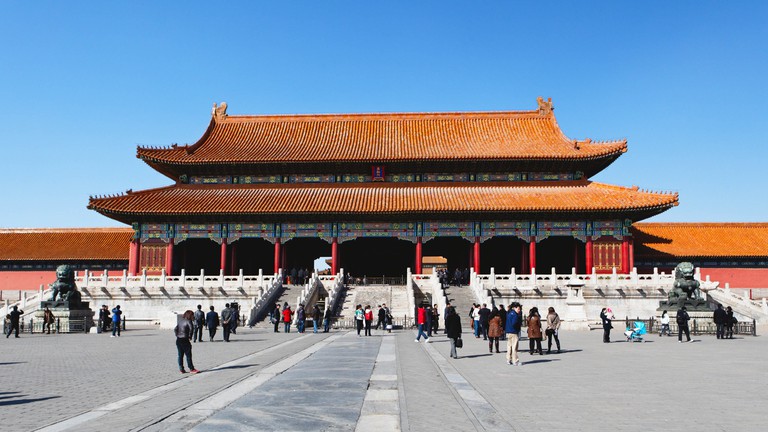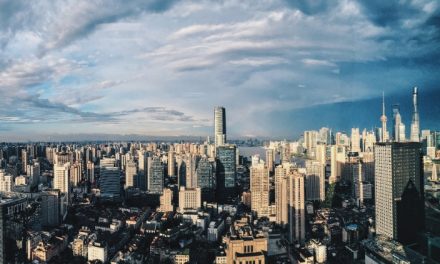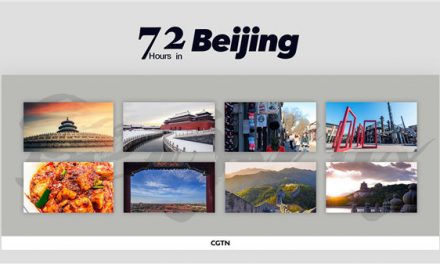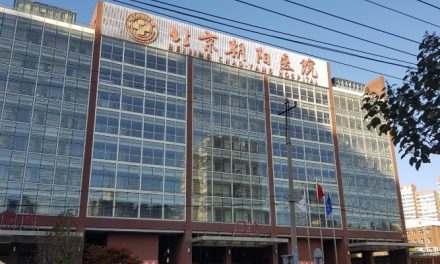An enviable seven UNESCO World Heritage sites are piled into Beijing (greedy) and the cuisine – Peking duck, shallot pancakes and dumplings, yes please – makes it virtually impossible to have a bad meal. Changing by the minute, Beijing is a treasure trove for visitors. The Chinese capital is the definition of bustling – its scale, smog, 21-million-strong population and dizzying number of things to see and do can be a little overwhelming to the unprepared visitor. Here’s how to remain calm in the teeming city.
Don’t visit the Forbidden City in the afternoon – especially on a public holiday. The 72-hectare palace complex limits ticket sales at a hefty 80,000 a day – but the allocation is heavily depleted well before midday.

Instead, turn up bright and early to avoid the heaviest of the queues and instead of entering via Tiananmen Square like the majority of visitors, consider an entry point a bit further away, such as Zhongshan Park. You’ll still have to wait to be frisked by security before you go in but you’ll avoid the long line at the ticketing booth. Once inside, don’t follow the same north-to-south itinerary as everyone else: explore alleys and palaces off the main drag to avoid the biggest crowds. And don’t forget to bring your passport – you will not be permitted entry without valid ID.
Don’t shop for antiques at Panjiayuan Antique Market. By all means, visit – but make sure you bargain hard for the Communist-era memorabilia and artwork and be aware that anything sold to you as a genuine antique is almost certainly not one.
Instead, try your luck at the Daliushi Ghost Market located in the newly built apartment towers by the East Fourth Ring Road. It’s the last of the so-called ghost markets – the name is said to allude to the fact that, historically, the goods were often stolen or raided from tombs. Its vendors sell a much larger variety of items than at Panjiayuan, from vintage clothes to jade jewellery and calligraphy. Opening at an eye-rubbing 3am – serious buyers turn up with headlamps on – it really begins buzzing at about 8am. It attracts antiques dealers and bargain-hunting hipsters alike.
Don’t plan to spend a day exploring outdoors without checking air pollution levels first.
Instead, go to a site such as Air Quality Index to ascertain the temperature and air quality first. A day spent breathing in acrid, smoggy air could cause health problems and Beijing’s weather is notoriously unpredictable. If the outlook is bad, plan to spend the day indoors. The National Museum of China and the Beijing Capital Museum both have extensive collections – and hardworking air-purifiers.
Don’t mess up your Peking duck order. Northern China’s toothsome delicacy is serious and some thought as to where you’re going to sample it is required.

Instead, head to one of the best, such as Da Dong (two locations at Changhong Qiao and Dongsishitiao), where the duck will be wheeled to your table with great ceremony and carved before your eyes. If you’re in the market for a splurge, it’s got to be Duck de Chine in Sanlitun. And make sure you dip shards of crisp skin in the dish of sugar provided – it works, trust us.
Don’t visit the Great Wall at Badaling (if you can help it). It’s well-restored but as the closest section of the Wall to Beijing (about 90 minutes drive), it draws the largest crowds. You’ll find yourself shuffling along, jockeying for position and unable to take a snap that doesn’t feature several hundred other tourists mugging for their own selfies.

Instead, venture slightly further afield to Simatai, 120 kilometres northeast of the city. It’s only partially restored – seeing ruined parts of the wall in original condition helps conjure its long history – and it’s the only section open for night tours. Here, it’s significantly less crowded and there’s a hike visitors can undertake from Simatai to the Jinshanling section – about 10 kilometres.
Don’t miss out on the old Beijing. Twenty years ago, the city streets were thronged with thousands of bicycles; now, the city’s subway system is extending to ever-distant new high-rise suburbs and the traffic is notorious. Chinese consumers account for 15 per cent of all international sales of luxury goods; traditional workshops and stores are harder and harder to find. It’s not all slick shopping malls and high-rise apartment buildings, though. Vestiges of times past are still there – you just have to look a little harder.

Instead, get lost in a traditional hutong. Thousands of hutong were razed prior to the 2008 Beijing Olympics. But tiny pockets of what used to be the most common form of housing still exist and there’s now a push to preserve what’s left. Hutong means “alley”, along which these courtyard homes were built. They first sprung up around the Forbidden City in the 13th century and once numbered in the thousands; now this traditional way of life is becoming rare. Gentrified streets housing hip bars and boutique hotels are on the rise but some still serve as homes and workshops. For the former, check out Dashilan, to the south of Tiananmen Square, or Wudaoying in the city’s east. For the latter, Yandai Xiejie – “Skewed Tobacco Pouch Street”, an 800-year-old neighbourhood next to Houhai Lake– is one of the oldest hutong in Beijing.
Don’t try to see everything if you only have a few days. Beijing is enormous and it’s chock-full of temples, restaurants, museums, hutong, parks and historical sites. To see everything would be to run yourself ragged.
Instead, make a plan. Explore attractions that are geographically close to one another so that you’re not navigating the subway to make it to a museum that’s miles across town from your lunch spot. Take it by neighbourhood: you can see Tiananmen Square and the Forbidden City in a day; 798 Art District requires a subway and a bus so it’s best to dedicate a whole afternoon to it.
Don’t attempt to catch the subway at peak-hour. More than 10 million people catch the subway every day in Beijing and sometimes crowd-control has to be employed.

Instead, catch it at literally any other time – it’s fast, cheap and extensive.
Don’t neglect Beijing’s smaller, quirkier attractions in between the Temple of Heaven, the Summer Palace and the Forbidden City.

Instead, squeeze in time to see lesser-known attractions. Beijing has tons of museums dedicated to everything from hairdressing to watermelons and they’ll provide a different view of the city. If the weather permits, spend some time in the city’s green spaces, where you’ll see a real slice of daily life. Here, people do tai chi, groups of old ladies practise dance steps and elderly men play checkers. Beihai park, Jingshan Park, Tiantan park, Ditan park and Zhongshan park (pictured) are all good choices
This is a place for show life about china, If these articles help you life better in china, Welcome to share this website to your friends, Or you can post questions about china life in FAQ, We will help you to find the right answer.






Recent Comments